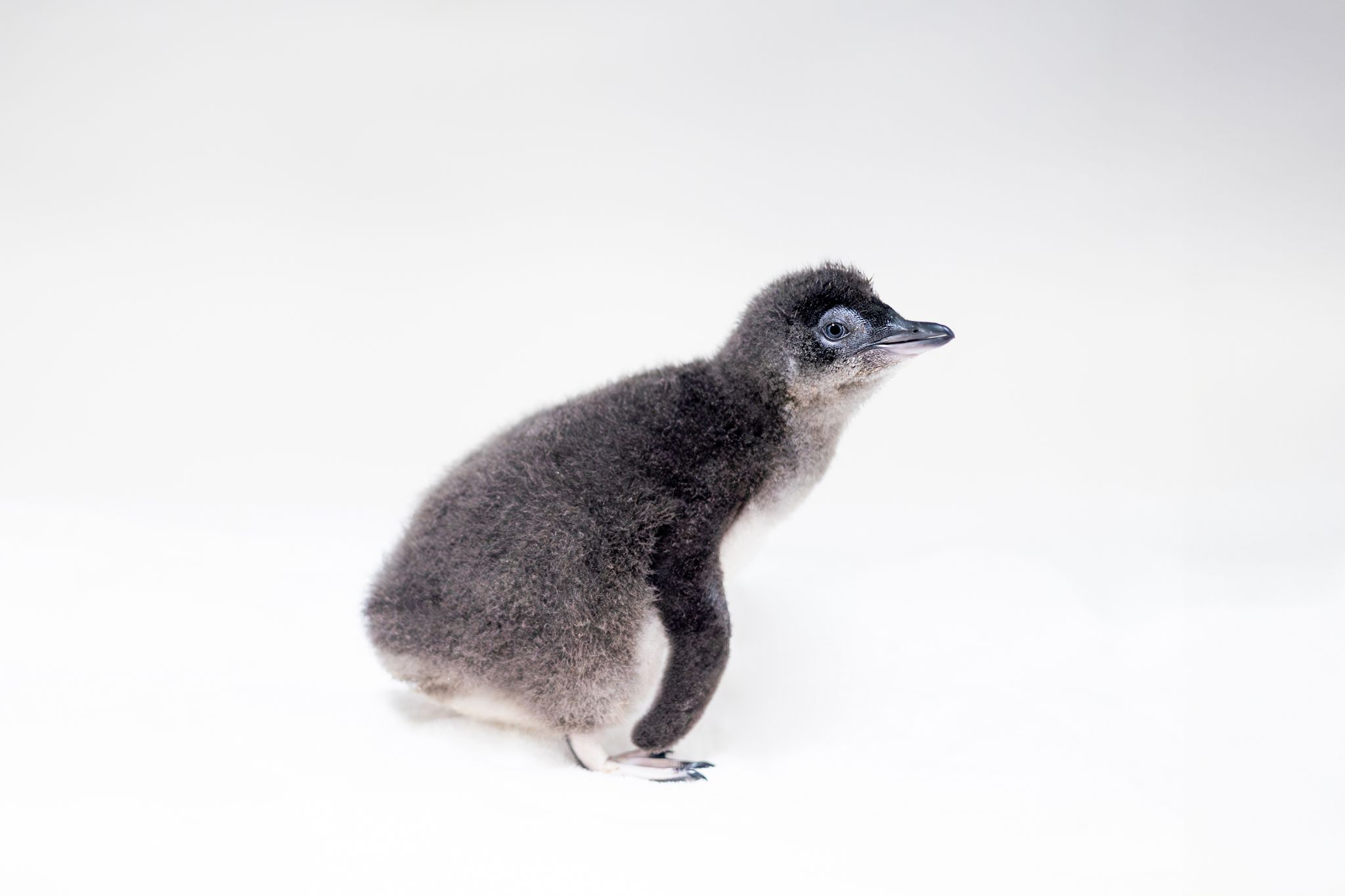
La Jolla, CA (Feb. 1, 2024) —For the first time, a Little Blue Penguin has hatched at Birch Aquarium at Scripps Institution of Oceanography at UC San Diego. The chick made its debut on New Year’s Day in the aquarium’s Penguin Care and Conservation Center in Beyster Family Little Blue Penguins.
“Our team is beyond excited to welcome this adorable new addition to the Birch Aquarium family!
Our penguin colony is truly a diverse group, comprised of individuals from five different zoos and aquariums,” said Kayla Strate, Assistant Curator of Birds.
“While it took some time for our penguins to synchronize to the same San Diego schedule, we’ve created the ideal environment for our birds to thrive thanks to careful observations and adjustments to our breeding plans. Each breeding success makes a meaningful addition to the genetic diversity of Little Blue Penguin populations in the U.S.,” she continued.
This moment, years in the making, marks a remarkable milestone in the aquarium’s penguin conservation efforts as well as cooperative breeding program efforts with other Association of Zoos and Aquariums institutions. This chick is also the first Little Blue Penguin to hatch on the West Coast.
“Birch Aquarium has significantly expanded its breeding and conservation efforts over the years,” said Harry Helling, Executive Director. “The hatching of our first Little Blue Penguin chick is a major milestone for how today’s aquariums can make a difference in a changing planet.”
For now, the chick will remain behind the scenes as the first few months are crucial to its development. The chick is the offspring of Cornelius (male) and Pink/Black (female), however, it is being hand-raised by the aquarium’s penguin care team. This is a labor-intensive task that requires expert-level avicultural skills according to Strate. The sex of the chick will be announced soon.
“I’m so proud of everyone on the team for rising to the challenge,” she said.
The chick is growing daily and fast! In just less than a month it nearly tripled in size, growing from 29 to over 800 grams. During its first few weeks, it was fed a blended formula of fish, krill and vitamins. It’s now alternating between formula and a few pieces of fish a few times a day and will soon graduate to eating whole fish.
The chick is currently covered in fluffy down feathers, however these feathers are not waterproof. The next significant milestone will be the chick’s first molt when it grows in a sleek set of waterproof feathers. At that time, in approximately three months, the penguin will be ready to join the rest of the colony in the exhibit.
The aquarium hopes that this new arrival helps inspire the public to continue to protect our ocean planet as wild populations of Little Blue Penguins are facing numerous challenges from climate change. Warmer waters mean they must venture to colder, deeper waters to find food. This change significantly impacts the overall health of penguins, making it more difficult for them to nest and breed.
“Penguins are impacted by climate change and are indicative of the health of the oceans,” said Jenn Nero Moffatt, Senior Director of Animal Care, Science and Conservation. “It is critical that we not only protect wild populations but continue to maintain a healthy and genetically diverse population of Little Blue Penguins in human care. Our efforts provide sanctuary and serve as a repository for this important bird species.”
The aquarium is hopeful about welcoming more chicks in the future, as additional eggs are currently developing behind the scenes. Penguin enthusiasts can follow the aquarium’s social media channels for the latest updates.
***
About Birch Aquarium at Scripps
Birch Aquarium at Scripps is the public exploration center for Scripps Institution of Oceanography at UC San Diego. Perched on a bluff overlooking the Pacific Ocean, Birch Aquarium features the groundbreaking work of Scripps Oceanography and UC San Diego scientists as well as conservation breeding programs, and interactive exhibits. Birch Aquarium’s mission is to connect understanding to protecting our ocean planet, which the aquarium achieves through engaging hands-on learning opportunities for more than 500,000 guests and 40,000-plus pre-K-12 students each year. Visit aquarium.ucsd.edu for more information.
###


